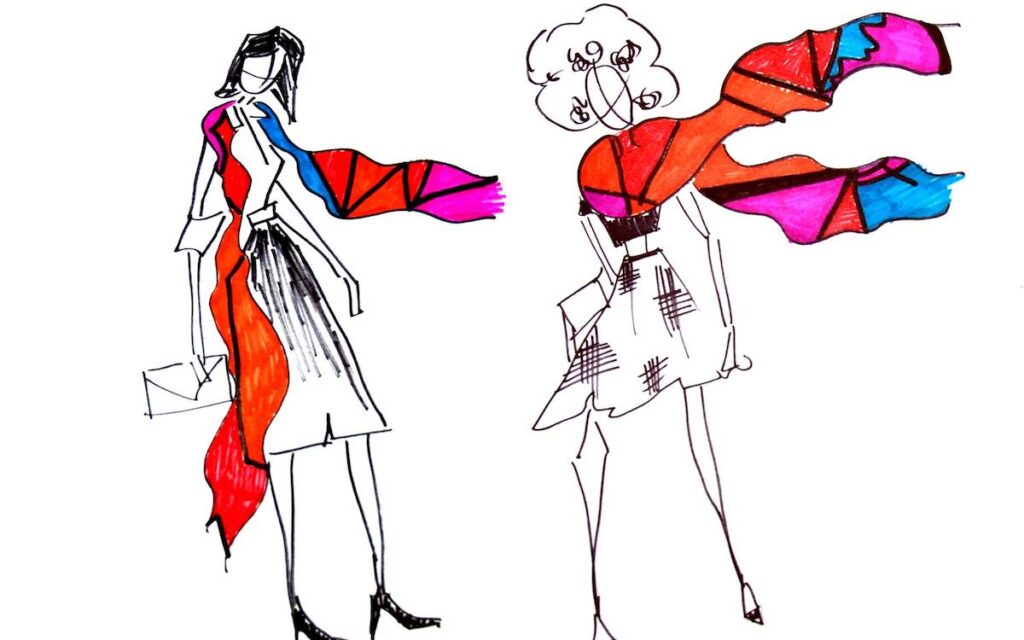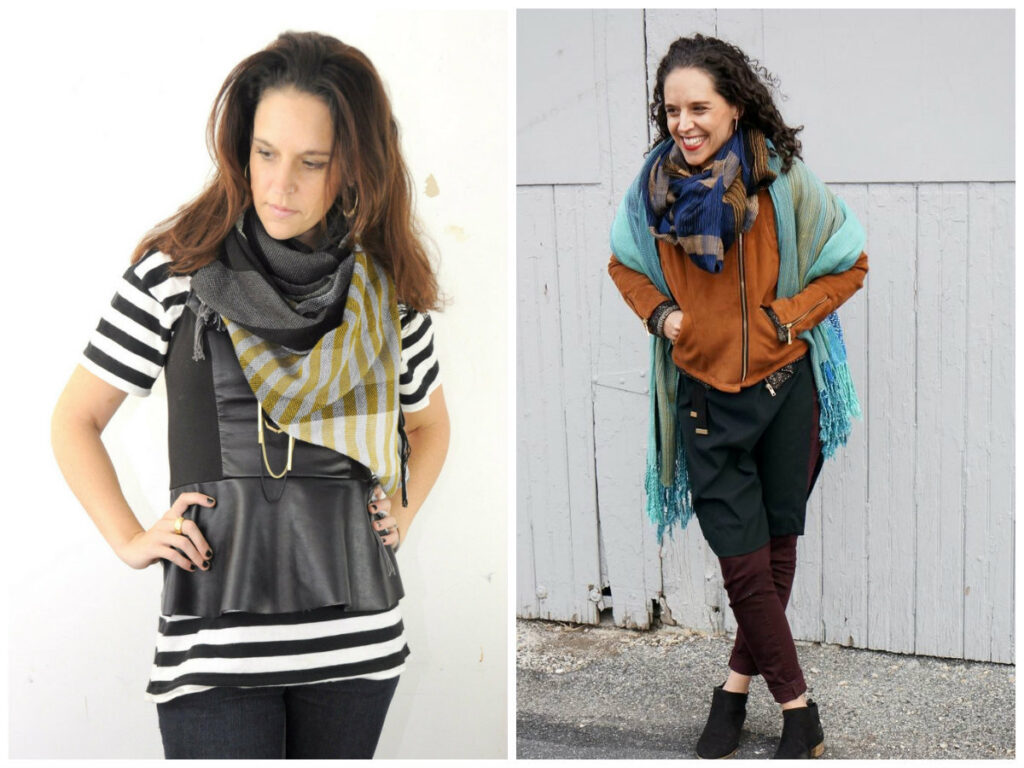When I first started teaching, I focused on dressing “professionally.” Dress pants, nice tops, and dress shoes. After ruining several pairs of dress pants (nothing like having a slip mold explode), I began reflecting, noticing physical education teachers dressed in what was appropriate for their jobs. I decided to do the same.
Depending on where you work, you may have a strict dress code you have to follow. At my school, we were allowed to wear jeans on Fridays, but after presenting my reasoning to the administration, I was granted permission to adjust my attire.
At first, I changed how I dressed for work because I was tired of ruining my clothes. But, I soon realized how we dress can be a powerful tool for creating connection and communicating with our students.
Let’s talk about clothes, the stories they tell, and how you can use your style as a classroom management tool.

The Connection Between Clothes and Creativity
Around the same time, I was pursuing my master’s degree and studying how to increase creative thought in the secondary classroom. Research demonstrated there were many factors negatively impacting creative thought. Things like family structure, socioeconomic status, and previous exposure to art were outside of my control. So, I turned my focus to what I could control. Things like projects, classroom rules and procedures, and the way I dressed. Although it’s not often looked at through a classroom management lens, dress is a way to communicate and connect with students.
As a textile designer, I have a strong interest in the impact our clothes carry. Both in how they make you, the wearer, feel, and the message they communicate to those around us.
In the book, Worn Stories, author Emily Spivack collects and catalogs images of clothes and the stories they carry. Spivack writes, “The clothes that protect us that make us laugh, that serve as a uniform, that help us assert our identity or aspirations, that we wear to remember someone- in all of these are encoded the stories of our lives. We all have a memoir in miniature living in a garment we’ve worn.”
Simply put, your clothes tell a story, and your students are paying attention.
There are moments in life when we pay close attention to what we wear. You intentionally pick outfits for interviews, first dates, and special occasions. Yet, we tend to forget about the power of fashion on a day-to-day basis, often brushing it off as a superficial pursuit.
I once had a student ask how I picked out my clothes and got dressed in the morning. I shared how I used the elements and principles as a guide to getting dressed. In other words, I got dressed in the same way I would create a work of art.
Using the Elements and Principles as a Guide for Getting Dressed
I’m encouraging you to put more thought into the clothes you wear. It’s important that your clothes reflect your personality. For example, you may be thinking you need to start dressing like Cassie Stephens. She rocks her clothes, but it’s okay if bright colors and lots of patterns make you break into a sweat. It’s even okay if you prefer a capsule wardrobe.
As art teachers, we look for things like contrast and unity in a work of art, so why not look for the same in our outfits? Just as students play it safe by avoiding a full range of value when shading, we do the same with our clothes. Most of the time we lack contrast to make our style interesting enough to garner our students’ attention.

When creating a painting, you might add contrast and unity through color, proportion, texture, and shape. You can achieve this in your style through layering, or by adding accessories, like scarves, jewelry, or a fun pair of shoes.
The Impact of Your Wardrobe on Student Behavior
The book Bounce: Mozart, Federer, Picasso, Beckham, and the Science of Success by Matthew Syed, Greg Walton and Geoffrey Cohen reveal a study demonstrating students who find similarities to their teacher perform better than those who see no commonalities. For example, students who were told they shared the same birthday as their teacher performed better than those who felt they had nothing in common. Students want to find ways to connect with you, but it can be hard for them to find common ground, unless you openly and regularly share information with them.
In other words, clothes are one way you can connect with your students without having to say a word.
Student, “Mrs. Kane, you look like a mix of cat women and a white Alicia Keys.”
Me, ” Thank you, that’s exactly what I was going for today.”
The Power of Letting Your Clothes do the Talking
When working with teenagers, you need them to be on your side from the moment they walk into your classroom. Classroom management boils down to communication and connection. Both usually take time, the exact opposite of what you have.
Not only is class time limited, but you don’t want your classroom to be chaos while you work on building a connection with your students.
Do it with your clothes.

My students’ positive behavior demonstrated my theory worked, but their words demonstrated it as well.
For example, one time I gave my students incorrect information and a subsequent conversation went like this.
Me, “I’m sorry, you were right, I was wrong. I don’t know what I’m saying.”
Students, after being thrilled I told them they were right, responded, ” It’s okay, you look nice today.”
Thank goodness I picked a nice outfit. Otherwise, they might not have forgiven me.
Another way my clothes help connect with my students is because my clothes communicate that I’m creative. You might think that this should be obvious to your students because you’re the art teacher. But, in my experience, when it comes to secondary students, very little is obvious. Teenagers also don’t give you the benefit of the doubt, you have to earn it. It can take weeks to prove your creative abilities in the classroom, or moments when students view your outfit as creative.
Setting Yourself Apart from Other Teachers
The art room is different from other classes, but students don’t always know that, especially if you’re a new teacher. Use your clothes to set yourself apart from the other teachers in the building.
Clothes are something you wear every day, while style is how you communicate with your clothes. When it comes to classroom management, it can be easy to put all of your focus on developing rules and procedures, forgetting about connection. Next time you go to pull clothes out of your closet, think about how you can use them to communicate and connect with your students.
What are other non-verbal tools that you can use to communicate with your students?
Have you ever considered using your clothes as a classroom management tool?
Magazine articles and podcasts are opinions of professional education contributors and do not necessarily represent the position of the Art of Education University (AOEU) or its academic offerings. Contributors use terms in the way they are most often talked about in the scope of their educational experiences.





